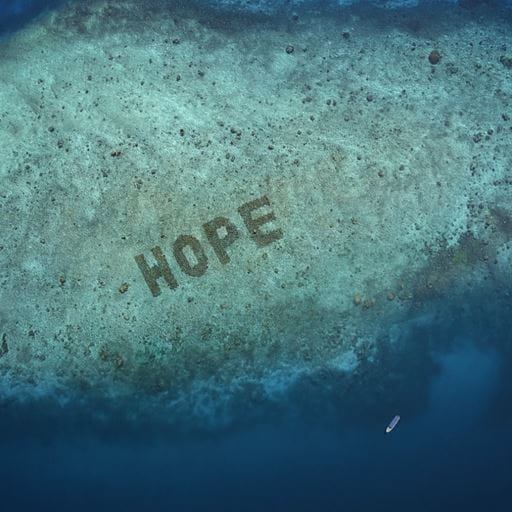Essex part of world’s largest coral restoration programme
-
Date
Thu 6 May 21

Hope Reef, the world’s largest coral reef restoration programme off the coast of Sulawesi, Indonesia, involves the University of Essex’s Coral Reef Research Unit.
The reef, which can be seen on Google Earth, has been built to spell the word H-O-P-E and is a symbol to show the world how positive change can happen within our lifetime.
Led by SHEBA, the programme aims to restore more than 185,000 square meters of coral reefs around the world by 2029 - roughly the size of 148 Olympic swimming pools.
Since 2008, SHEBA’s parent company, Mars Inc, has invested more than $10m in research, restoration and community engagement as part of its coral reef program.
Professor David Smith, Director of Essex’s Coral Reef Research Unit and Chief Marine Scientist at Mars Inc, said: “We’re thrilled to unveil Hope Reef and show that there really is hope for our oceans. Our efforts around the world to restore and regenerate these precious ecosystems are showing exciting results and having a positive impact on local communities, which we’re delighted to see. We hope our efforts inspire others to join us so we can all play our part in helping to prevent the extinction of our coral reefs.”
Scientists estimate that if the world does nothing, 90% of the world’s tropical reefs will be gone by 2043, impacting nearly 500 million people who depend on them for food, income and coastal protection.
Since the start of Hope Reef’s restoration two years ago, coral cover has increased from 5 to 55%, fish abundance has increased and there has been the return of species such as sharks and turtles.
Viewers who watch the SHEBA Hope Reef story, The Film That Grows Coral on YouTube will help raise money for reef restoration. With every view, the advertising money generated is invested into coral reef restoration through campaign partner, The Nature Conservancy. This is the first time that 100% of the funds from a YouTube channel have been monetized for sustainability efforts.
Providing a simple but effective solution, Hope Reef uses innovative ‘Reef Star’ technology - 90cm-wide, star-shaped, steel structures that are handmade by the local community in Indonesia. Each star is joined underwater to create a strong web that covers the seabed and provides a stable base for coral fragments to regrow.
Dr Elizabeth McLeod, The Nature Conservancy’s Global Reef Systems Lead, said: “Coral reefs are the heart of our oceans, supporting over a quarter of marine life. Reefs also supply millions of people worldwide with food, livelihoods, life-saving medicines, and protection against storms. It’s imperative that we scale up our work to protect and restore the long-term health of these vital ecosystems, as well as addressing the threats that have caused their decline and building their resilience to a changing climate.”
.jpg?mh=500&mw=500&hash=6568B6C9CCF5290A596BEF6678B6AD0E)



